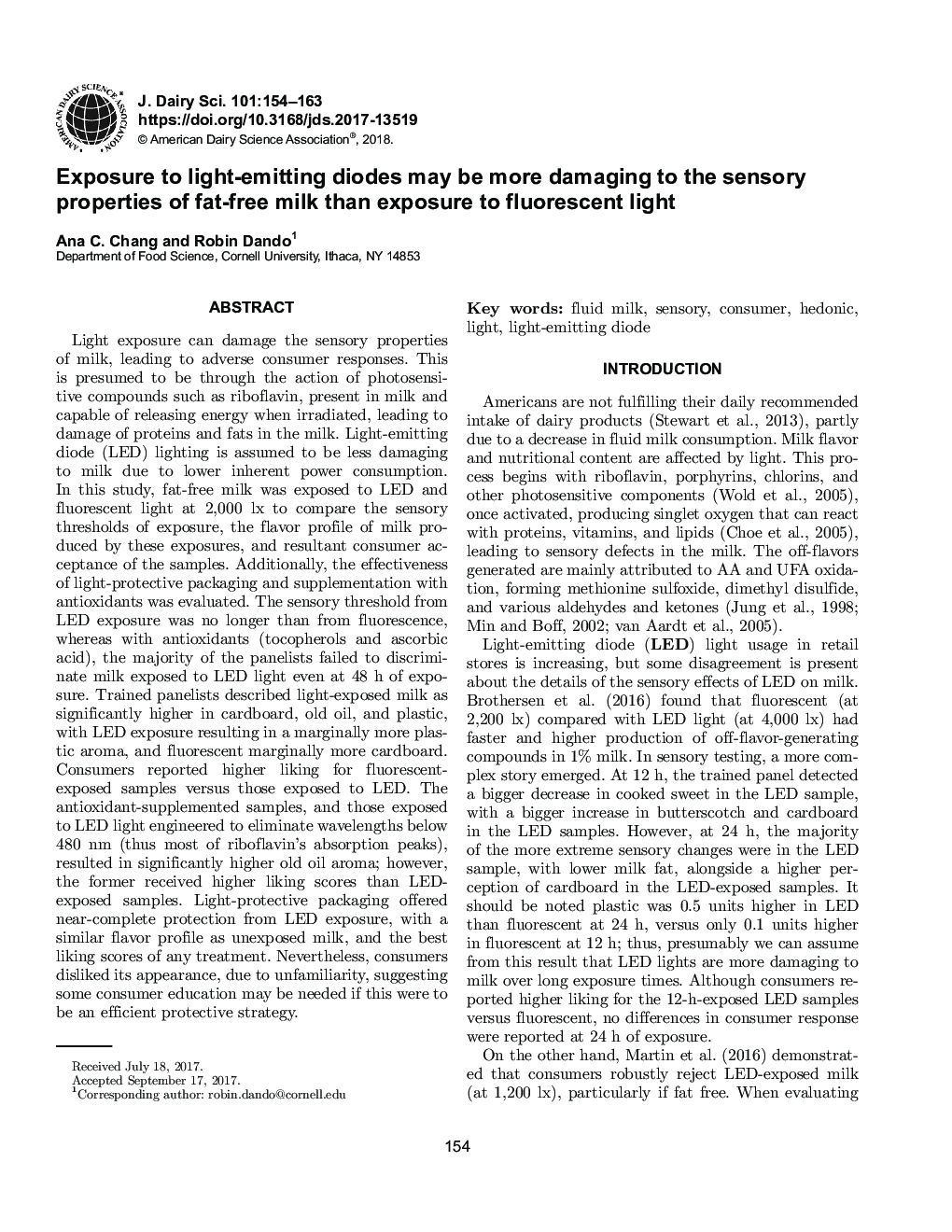| کد مقاله | کد نشریه | سال انتشار | مقاله انگلیسی | نسخه تمام متن |
|---|---|---|---|---|
| 8501598 | 1553844 | 2018 | 10 صفحه PDF | دانلود رایگان |
عنوان انگلیسی مقاله ISI
Exposure to light-emitting diodes may be more damaging to the sensory properties of fat-free milk than exposure to fluorescent light
ترجمه فارسی عنوان
قرار گرفتن در معرض نوردهی دیودها ممکن است به خواص حسی شیر بدون چربی مضرتر از قرار گرفتن در معرض نور فلورسنت باشد
دانلود مقاله + سفارش ترجمه
دانلود مقاله ISI انگلیسی
رایگان برای ایرانیان
کلمات کلیدی
شیر مایع حسی مصرف کننده، هدیونیک سبک، دیود ساطع نور،
موضوعات مرتبط
علوم زیستی و بیوفناوری
علوم کشاورزی و بیولوژیک
علوم دامی و جانورشناسی
چکیده انگلیسی
Light exposure can damage the sensory properties of milk, leading to adverse consumer responses. This is presumed to be through the action of photosensitive compounds such as riboflavin, present in milk and capable of releasing energy when irradiated, leading to damage of proteins and fats in the milk. Light-emitting diode (LED) lighting is assumed to be less damaging to milk due to lower inherent power consumption. In this study, fat-free milk was exposed to LED and fluorescent light at 2,000 lx to compare the sensory thresholds of exposure, the flavor profile of milk produced by these exposures, and resultant consumer acceptance of the samples. Additionally, the effectiveness of light-protective packaging and supplementation with antioxidants was evaluated. The sensory threshold from LED exposure was no longer than from fluorescence, whereas with antioxidants (tocopherols and ascorbic acid), the majority of the panelists failed to discriminate milk exposed to LED light even at 48 h of exposure. Trained panelists described light-exposed milk as significantly higher in cardboard, old oil, and plastic, with LED exposure resulting in a marginally more plastic aroma, and fluorescent marginally more cardboard. Consumers reported higher liking for fluorescent-exposed samples versus those exposed to LED. The antioxidant-supplemented samples, and those exposed to LED light engineered to eliminate wavelengths below 480 nm (thus most of riboflavin's absorption peaks), resulted in significantly higher old oil aroma; however, the former received higher liking scores than LED-exposed samples. Light-protective packaging offered near-complete protection from LED exposure, with a similar flavor profile as unexposed milk, and the best liking scores of any treatment. Nevertheless, consumers disliked its appearance, due to unfamiliarity, suggesting some consumer education may be needed if this were to be an efficient protective strategy.
ناشر
Database: Elsevier - ScienceDirect (ساینس دایرکت)
Journal: Journal of Dairy Science - Volume 101, Issue 1, January 2018, Pages 154-163
Journal: Journal of Dairy Science - Volume 101, Issue 1, January 2018, Pages 154-163
نویسندگان
Ana C. Chang, Robin Dando,
